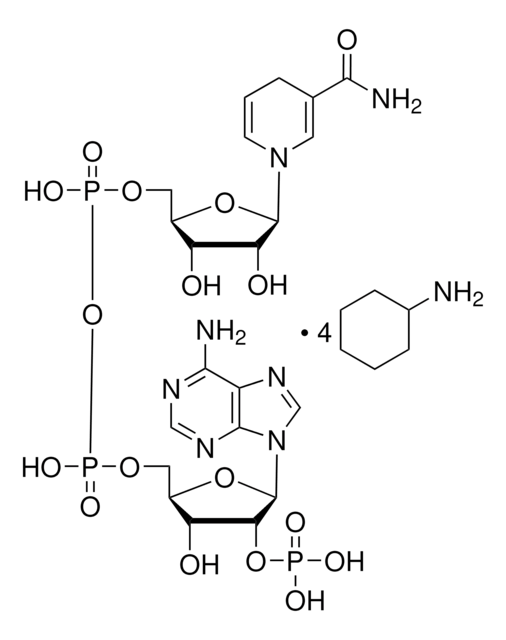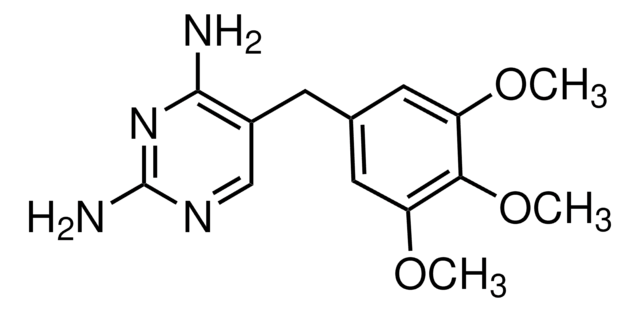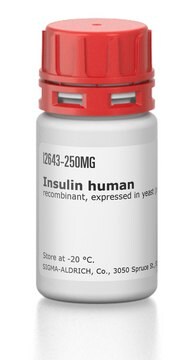D6566
Dihydrofolate Reductase human
≥80% (SDS-PAGE), recombinant, expressed in E. coli, ≥1 units/mg protein
Synonyme(s) :
DHFR, Tetrahydrofolate NADP+ oxidoreductase
About This Item
Produit recombinant
expressed in E. coli
Niveau de qualité
Pureté
≥80% (SDS-PAGE)
Forme
solution
Activité spécifique
≥1 units/mg protein
Poids mol.
25 kDa
Concentration
0.02-0.06 mg/mL
Numéro d'accès UniProt
Conditions d'expédition
wet ice
Température de stockage
−20°C
Informations sur le gène
human ... DHFR(1719)
Description générale
Application
- to investigate the stable expression of green fluorescent protein and the targeted disruption of thioredoxin peroxidase-1 gene in Babesia bovis
- to study the structural analysis of human dihydrofolate reductase as a binary complex
- to study its in vitro kinetic assay for the enzyme inhibition study
Actions biochimiques/physiologiques
NADPH 0.16 mM
7,8-dihydrofolate 0.03 mM
8-methylpterin 0.13 mM
Ki7
Folate 2.6x10-5 mM
Methotrexate 6.1-9x10-9
Définition de l'unité
Forme physique
Code de la classe de stockage
12 - Non Combustible Liquids
Classe de danger pour l'eau (WGK)
WGK 3
Point d'éclair (°F)
Not applicable
Point d'éclair (°C)
Not applicable
Équipement de protection individuelle
Eyeshields, Gloves, multi-purpose combination respirator cartridge (US)
Certificats d'analyse (COA)
Recherchez un Certificats d'analyse (COA) en saisissant le numéro de lot du produit. Les numéros de lot figurent sur l'étiquette du produit après les mots "Lot" ou "Batch".
Déjà en possession de ce produit ?
Retrouvez la documentation relative aux produits que vous avez récemment achetés dans la Bibliothèque de documents.
Les clients ont également consulté
Articles
This issue of Biofiles reviews some of our newest and most innovative technologies and their specific applications toward cancer research. In preparing this issue of Biofiles, one is reminded how complex the disease of cancer is, and how difficult it is to identify one topic that is completely unrelated to any other.
This article reviews some of our newest and most innovative technologies and their specific applications toward cancer research. It describes how complex the disease of cancer is, and how difficult it is to identify one topic that is completely unrelated to any other.
Notre équipe de scientifiques dispose d'une expérience dans tous les secteurs de la recherche, notamment en sciences de la vie, science des matériaux, synthèse chimique, chromatographie, analyse et dans de nombreux autres domaines..
Contacter notre Service technique





